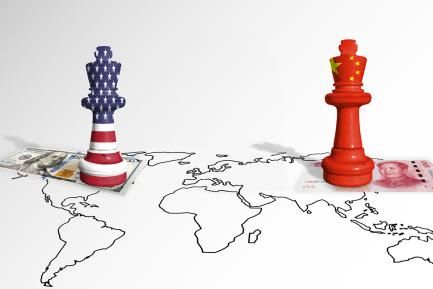Gradual recovery in China: cautious optimism with some restrictions

• The Chinese economy has accelerated its recovery in the last month and some sectors have already recovered almost complete normality.
• It is, however, a patchy recovery: economic activity in some service sectors, such as hospitality, leisure and catering, remains well below pre-crisis levels, hampered by the weakness of face-to-face consumption.
• Overall, the improvement invites cautious optimism, in the knowledge that COVID-19 casts a long shadow and that it will take time for aggregate activity to fully return to normal.
There is much discussion about the speed of the Asian giant’s recovery following the blow that COVID-19 dealt to its economy in Q1 (9.8% quarter-on-quarter decline). It is fast or slow? Gauging the speed of the recovery in China and its characteristics, with all its nuances, is particularly important given that it was the first country to be affected by COVID-19 and also the first to contain the epidemic by the end of Q1 after imposing a strict lockdown. China is thus «one quarter ahead» and is in a good position to offer us clues about how advanced economies will perform over the coming months.
As shown in the first chart, the social distancing measures imposed by China, synthesized in the stringency index created by the University of Oxford, were quite severe and still remain at intermediate levels. The approach has been highly cautious. Indeed, at the end of April mobility was restricted once again in some regions, while in May citizens in some regions were ordered to stay in their homes. However, if there are no further outbreaks, we can expect the social distancing measures to be eased by the end of the year (bringing them from their current level of slightly above 60 out of 100 to around 20 points). The relaxation of these measures could thus provide a significant boost to the economy in the second half of the year, once the «new normal» has been achieved (in the second half of the year, we expect a recovery in GDP growth that could put average growth at around 1.0% in 2020).
A gradual and patchy recovery
China’s recovery can be divided into two phases: a very slow phase in March and the first half of April, and a second phase that has been more encouraging, albeit heterogeneous by sector. Since then, in some sectors – such as construction, manufacturing and the automotive industry – economic activity has almost completely returned to normal relative to pre-COVID-19 levels. However, in some service sectors – such as hospitality, leisure and catering – activity remains well below normal (according to a survey by Gavekal Dragonomics, by the end of April, 64% of Chinese people had eaten out at a restaurant, 53% had been to a shopping centre and only 15% had returned to the gym).
The fact is that the weakness of consumption, together with the maintenance of social distancing measures (restrictions on the capacity of public events and limitations on leisure activities), will have a lasting effect that will make it difficult for many tertiary sector activities to regain their buoyancy in what remains of 2020. This will make it difficult for aggregate demand to recover to pre-crisis levels and will continue to hamper a full recovery. There is certainly no lack of reasons for the weaker consumption: from the detrimental impact of the COVID-19 epidemic on the labour market (only 25% of workers reported having maintained their wages unchanged in March), to a change in people’s consumption habits related to a certain «fear factor», to a higher savings rate as people become more cautious. The Chinese authorities are aware of these issues and, from 7 May, hotels, restaurants and shops are allowed to open and operate as normal, while leisure spaces (cinemas, parks, museums and gyms) can also reopen, albeit with capacity restrictions. These measures are aimed at consolidating the incipient improvement in consumption.
Changes in consumption habits have already begun to emerge and some of them may have come to stay, leading to a significant sectoral reconfiguration in the Chinese economy. In particular, we note that in March and April online sales have remained at the same level as in 2019 on average, while in-person retail sales have been 30% to 36% below normal. In other words, the resilience of online commerce – which has gone from representing 12% of total commerce at the beginning of 2016 to the current level of 30% – has been fundamental in avoiding an even harsher economic collapse. The same can be said of the consumption of essential goods, which in April stood at more than 400% above the average for 2019, while at the other end of the spectrum hotel and restaurant catering remained 50% below normal.
Despite the difficulties and the lasting effects of COVID-19 discussed above, it is undeniable that the rebound in several economic sectors in April, after economic activity shifted up a gear in the second half of the month, offers some hope and allows us to speak of «cautious optimism» at this time. A somewhat more positive reading is also obtained when we look at China’s mobility data collected by Baidu (the so-called «Chinese Google»). In Beijing, for example, mobility – measured by the number of people leaving the city – rose significantly at the end of April. However, the flow of people entering Beijing remained abnormally low, which may be related to the spread of teleworking and the devastating effects of the virus on the labour market (it is estimated that one-fifth of Chinese workers who left their workplace to celebrate the Chinese New Year at the end of January had not yet returned to their workplaces by the end of April). Another positive element is related to the modest number of companies that have failed: the data show no significant increase in bankruptcies compared to the first half of 2019. This may be a positive consequence of the Chinese authorities’ measures to boost liquidity in the markets and among firms (fewer restrictions since February on the issuance of new corporate bonds to refinance debt and liquidity injections into the financial markets).
What assessment can we make of the situation? One of cautious optimism
The ideal outcome when an economist performs an analysis such as this one is to be able to provide a clear response in an unequivocal direction. In the case of China’s recovery, this task is complicated by the significant disparity depending on the sector in question, and this makes it difficult to determine just how much things have really improved.
To help us clarify this issue, we have analysed the evolution of our economic activity indicator, which estimates the state of the Chinese economy using indicators that are directly related to the country’s economic activity, such as electricity consumption or car sales.1 The results support a scenario of cautious optimism: the economic activity index fell by only 0.3% year-on-year in April, after plummeting 8.5% in Q1 (GDP fell by 6.8% year-on-year), which is a more encouraging development than expected (it would correspond to a quarterly rebound of slightly over 8%, well above most forecasts).
While we have more reason to be cautiously optimistic today than we did a month ago, we must remember that there are also reasons to be particularly cautious and not to rejoice just yet. Indeed, uncertainty is so high that, for the first time, the Chinese government has not set a growth target for 2020. On the one hand, our economic activity index does not accurately capture the performance of the foreign sector, and in all likelihood the weakness of global demand will result in a collapse in Chinese exports in Q2, offsetting the boost from domestic demand. In particular, according to the Asian trade scenarios developed by the World Trade Organization, Chinese exports could contract by between 30% and 50% year-on-year in the first half of 2020, which would have a profound impact on quarter-on-quarter GDP growth in Q2.2
On the other hand, the current situation is extremely fragile and unstable, so any further outbreaks could force a retreat in the lifting of restrictions (cinemas and theatres opened at the end of March, only to close again just five days later). For instance, an article analysing Chinese household consumption on the basis of credit card transactions3 shows how the incipient rebound in consumption in late March came to a grinding halt in the first half of April due to fears of a second wave, following the emergence of new local outbreaks of SARS-CoV-2.
In short, China has experienced a sharp acceleration in the pace of its recovery over the past month, making gloomy readings of the situation inaccurate – and the fiscal stimulus in the second half of 2020 will also help.4 Nevertheless, the weakness of the services sector (which accounts for 52% of GDP), the maintenance of social distancing measures and the lasting effects of the virus on consumption and on the labour market will prolong the time required for economic activity to fully return to normal. All in all, we can ingest a certain dose of optimism... ma non troppo.
1. We presented our indicator for the first time in the Focus «China’s economic growth under the microscope: past, present and future» in the MR02/2018.
2. Given that exports account for 17% of GDP, the negative effect would amount to between 5 and 13 pps.
3. See H. Chen, W. Qian and Q. Wen (2020). «The impact of the COVID-19 pandemic on consumption: Learning from high frequency transaction data». Available in SSRN paper 3568574.
4. Within the framework of the National People’s Assembly, the cabinet has announced an increase in the public deficit target for this year up to at least 3.6% of GDP (higher than the 2.8% in 2019). While this increase may not seem particularly significant, it should be borne in mind that the government is also implementing a major rise in spending and investment among public enterprises and local entities that do not fall within the perimeter of the government’s budget (this spending could reach around 3% of GDP).








